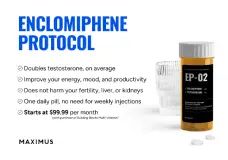The following is met with much skepticism, but ZRT labs has addressed this issue with tansdermals. I have been on creams too and ran into issues. Keep in mind that natural production is like 7-10mg of testosterone a day. Many people think we do not absorb well from creams but certain folks think that it is much closer to 90%, it is just that traditional testing doesn't reflect it. I have included a link to their 'paper' on this and have also provided the response from the lab director when I asked him about my case.
This was a response from the lab founder on a public forum when I asked him about the difference. Also when I said closer to 100%, I was a little vague as I believe recall them saying 90+% absorption. Some is the same stuff, but also some other ideas
*****
Your blood spot testosterone (T) value is close to what I would expect it to be – about 10x what you found in venipuncture serum (7139 vs 500 ng/dL). If your estrogens did not go up with the 50 mg topical T then you will probably have few, if any, side effects. Estrogen tends to inhibit the beneficial actions of T. Higher conversion of T to estrogens (estrone and estradiol) occurs more in older men who are overweight.
That your hematocrit and hemoglobin are creeping up suggests the amount of T your body is exposed to is higher than indicated by the serum test.
Many men use the 50-100 mg dosing and feel good for a while, but then notice the positive effects wane. This can be caused by target tissues becoming less responsive to high levels of hormone. In science vernacular we call it tachyphylaxis – a decrease in response to a drug when it's present at high levels.
Men at their hormonal peak (late teens to early 20s) manufacture about 5-7 mg of T per day. Their serum T, as well as blood spot T, ranges from 500-1200 ng/dL. When older men with low T put 5 mg of T on their skin as a topical, it has little impact on serum T, as you saw with the topical dosing. . In sharp contrast the topical T raises blood spot T to 500-1000 ng/dL. Saliva levels also go up. When they use 10x more T (i.e. 50 mg), it slightly raises serum T but raises capillary blood spot T to 5000-10,000 ng/dL. Your T value of 7139 ng/dL on the higher dosing is what I would expect to see for the dosing you used.
Venipuncture serum T represents blood returning to the heart. Blood spot T represents capillary blood that is rich in oxygen and other small nutrients, which include steroids that are delivered topically. We believe that, like oxygen, steroids are distributed into the tissues adjacent to capillary beds, and the venous blood, from which serum is prepared, is depleted of the steroids. This is why T in capillary blood is so much higher than in venous blood, and why the capillary blood is more representative of T delivered to tissues.
Keep in mind that “feeling better” on a higher dose of testosterone doesn't necessarily mean it's better for you in the long run. An increasing hematocrit signals excessive dosing. Also, feeling better could reflect the impact T is having on neurotransmitters. Testosterone increases dopamine, which certainly would make someone feel better – and that's a good thing. But too much T will also eventually lower dopamine levels (tachyphylaxis kicking in), which may explain why men often say the “feel good” effect of topical T wears off. How testosterone is affecting you brain production of “feel good” neurotransmitters is not related to how it is affecting other systems in your body, such as production of red blood cells (hematocrit) or mitochondrial function (energy production).
I believe that venipuncture serum testing for testosterone and other sex-hormones (estrogens and progesterone), following topical dosing, grossly underestimates the tissue levels of testosterone, which are more accurately determined by measuring itin capillary blood (blood spot) or saliva. This marked difference in serum vs blood spot levels of T and other hormones only appears to occur when the hormone is delivered topically – not as a troche, sublingual, pellet, im, or sc route of administration. Excluding topically delivered hormones, serum and blood spot values are very similar.
It's possible that the 50 mg of topical T you're taking is the perfect dose for you and your unique body chemistry and androgen receptor status. We're all different, and respond differently to steroids. I'm a great believer in physiological dosing. It's what Mother Nature intended, and will be associated with the least number of side effects. Keep in mind that no amount of testosterone is going to have its potential benefits if you don't eat right, exercise, reduce stress, and get enough sleep.














